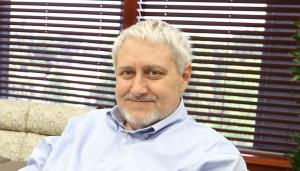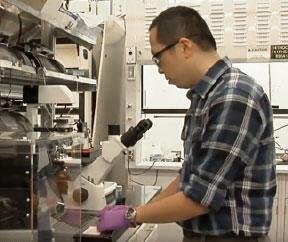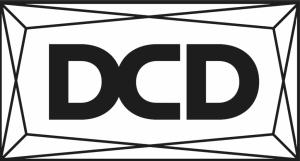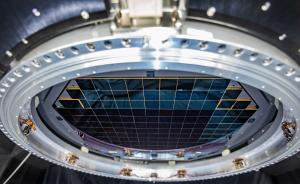LAB REPORT
Science and Technology Making Headlines
Sept. 18, 2020


LLNL Director Bill Goldstein ranked No. 25 of best CEOs during the COVID-19 pandemic.
Goldstein among top CEOs during pandemic
The coronavirus pandemic has been, and continues to be, a major test for corporate leaders. The public is watching whether CEOs lay off or furlough workers, as well as how they treat their employees during this time.
Employees themselves are paying close attention to the benefits their employers choose to give them or not, such as added mental health benefits or childcare benefits.
So which CEOs have done a good job navigating the pandemic crisis, according to employees? Jobs posting and research website Glassdoor analyzed anonymous company reviews on its website between March and July to find out.
To determine the ranking, Glassdoor looked at the quality of employee reviews, CEO approval ratings and how employees talked about their leadership during the pandemic. Leadership scores are rounded to the nearest hundredth for reporting simplicity.
LLNL Director Bill Goldstein ranked 25 on the list with an 85 percent leadership score during COVID-19.


Congwang Ye is working with an industry partner on a project to clear air indoors and improve health.
Clearing the air
There's no denying the entire Bay Area is feeling the effects of California's raging wildfires. Depending on whether your home or office is outfitted with necessary filters or air purifiers, you also could be feeling those effects after breathing in unhealthy air.
Lingering smoke and orange skies may have kept many people indoors, however, air quality experts explain people can take safety a step further by investing in quality air filters and purifiers, and even designating a room for respiratory relief.
At Lawrence Livermore National Laboratory, staff engineer Congwang Ye is working with with industry partner Artveoli on a project to clear air indoors and improve health.
Their ongoing effort has been made more challenging by both COVID-19 and the California wildfires.
"The air quality is going to be a very repeating problem that we come across all the time," Ye said. "Whether it's wildfire or virus running around, we need to have a solution to tackle that."
Ye added: "As residents of California, we are very unfortunate to have to face these challenges. What I hope is that we will be able to push this out faster, so that we can really get that into people's hands and help."


LLNL is part of the COVID-19 High-Performance Computing Consortium and is using supercomputers like Sierra to help understand COVID-19.
Using supercomputers to battle COVID
Nations and industry have put rivalries aside to marshal the greatest force of computing power ever formed to help fight the pandemic.
The COVID-19 High-Performance Computing Consortium is the largest public--private computing partnership ever created, a collaboration against the challenge of our times. It hopes to minimize the impact of this crisis, help understand how COVID -19 spreads and how to stop it. While the collaboration and access to resources were professionally astounding, it was nothing when compared to the tragic personal impact of COVID-19 being felt around the world.
But they hope that their work could build the framework to make sure this never happens again.
"There's been an ongoing crisis in drug development for years,” said Jim Brase, the deputy associate director for Computing at Lawrence Livermore National Laboratory, a consortium partner. “We're not developing new medicines.”
Brase, who heads his lab’s vaccine and antibody design for COVID-19, also is the lead for an older consortium, the Accelerating Therapeutics for Opportunities in Medicine group. ATOM was originally set up to focus on cancer, and while that remains a significant aspect of its work, the partnership has expanded to “building a general platform for the computational design of molecules.”
In pharmaceutical research, “there are a lot of neglected areas, whether it's rare cancers or infectious disease" in developing nations, he said. “And if we build this sort of platform for open data, open research and [give academia] drug discovery tools to do a lot more than they can do today, tools that have been traditionally sort of buried inside big pharma companies… they could work on molecular design projects for medicines in the public good.”


The complete focal plane of the future LSST camera is more than two feet wide and contains 189 sensors that will produce 3,200 megapixel images. Photo courtesy of Vera Rubin Observatory.
Galaxy is in the eye of the beholder
The world’s first 3,200-megapixel image was taken this week by the Legacy Survey of Space and Time (LSST) camera. According to experts who designed the camera, the LSST is powerful enough to take a picture of a golf ball from 24 kilometers away.
The LSST is made up of an array of imaging sensors and is scheduled to be installed in the Vera C. Rubin Observatory in Chile. Once installed, it will spend its time capturing unbelievably high-resolution images of the Southern sky. One full panorama will be captured with the camera every few nights.
“This is a huge milestone for us,” said Vincent Riot, LSST camera project manager from Lawrence Livermore National Laboratory. “The focal plane will produce the images for the LSST, so it’s the capable and sensitive eye of the Rubin Observatory.”

The perfect football throw is a tight spiraling of the tip around the path of flight.
The perfect pass
The hallmark of a perfectly thrown football is a tight spiraling of the tip around the course of the parabolic path of flight. Why the tip follows the trajectory has presented a paradox for some time. A team of researchers, including Lawrence Livermore physicist Willy Moss, provided a simple resolution.
Moss — along with lead author Richard Price of Massachusetts Institute of Technology (MIT) and co-author Tim Gay of the University of Nebraska — distilled the physics into two simple equations that could be solved numerically. The solution explains why the tip of the ball follows the ball’s trajectory.
“If you were to put a pen on the nose of a spinning football in flight, you would see that the nose draws a spiral around its direction of motion as it flies, not a single dot at the center,” Moss said. “The combination of gravity, the wind force on the football and gyroscopics are the key to this paradox. But a numerical solution by itself still doesn’t help someone understand why the ball does what it does.”
The numerical solution illuminates a simple qualitative explanation based on the odd behavior of gyroscopes.
“Gyroscopic motion is not intuitive, even for physicists,” Moss said. “Just accept as fact the following behavior: If you have a gyroscope spinning vertically and you push the top of it with your finger, it will move to the left or right, at right angles to the push, not in the direction of the push. That’s what’s going on here.”





